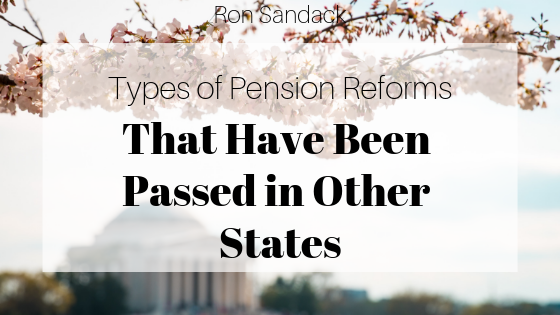Working for the state can have some major benefits. For decades it was assumed state workers were giving up short-term salary opportunities for long-term retirement stability. That long-held belief is being tested now because when it comes to retirement, many state workers such as teachers, firefighters, and police could soon be facing a crisis. In many states, there is not enough money saved to pay for public pensions that have been promised to these workers. Some retirees have already begun seeing smaller checks and many current employees are also seeing a drastic change in their pension formula. To really fix public pension funding several states have passed various pension reforms.
Work Longer or Retire Later
In the U.S., now more than half of the states are requiring their employees to either work longer or retire later. The age for retirement in most states for state employees and educators was 60 and 58. In states such as Colorado, the retirement age has now risen to 64 years for new hires beginning in 2020. Although this change will mostly affect new employees, current employees will also see a change to their pensions.
Pension Benefit Calculation
Other states are now changing the way the pension benefit is calculated, which will drastically reduce how much they pay in pensions. While it’s challenging to change current pensions for people who have already retired, states are now reducing the cost of living adjustment — which is a major driver of expense for many funds (especially for Illinois). In Kentucky, their largest public pension plan has suspended all cost of living adjustments until the system is 100% funded.
New Laws to Bridge the Gap
One way states are dealing with pension funding shortfalls is by creating new laws to bridge the gap financially. As of now, 13 states have already begun drafting new laws to create new revenue sources to fund pensions. In 2018, Oregon passed a law to use earnings from alcohol, marijuana, and lottery taxes to help bankroll pensions. New Jersey used all the money from its state lottery to help bolster their public pensions, to the tune of approximately $1 billion more per year to its pension funds.
New Pension Models
Similar to what corporate America did in the 80’s and 90’s, many states are moving away from the traditional defined-benefit pension models in favor of more realistic and modern retirement savings plans. This includes defined-contribution plans, like 401(k)-style plans. This is because these plans are far more affordable to taxpayers and involve a higher level of contribution from the participant/beneficiary. With this type of plan in place, states can contribute less toward an employee’s retirement fund and put more of the financial risk, and reward, on the employee; similar to the private sector. This means every stakeholder would have market exposure, not just taxpayers.
Conclusion
The traditional model of defined-benefit public pension plans is putting enormous stress on governmental budgets and taxpayers; to the detriment of core governmental services as more and more public dollars are allocated for pensions and less towards public education, health and welfare and public safety. This imbalance continues while the ever-increasing pensions debt and underfunding crisis grows worse. Something must give before retirees’ benefit checks bounce. Moving to defined-contribution plans is the long-term solution. In the short-term, changes must be made to plan designs and plan funding to stave off insolvency or see draconian cuts to core governmental services.

